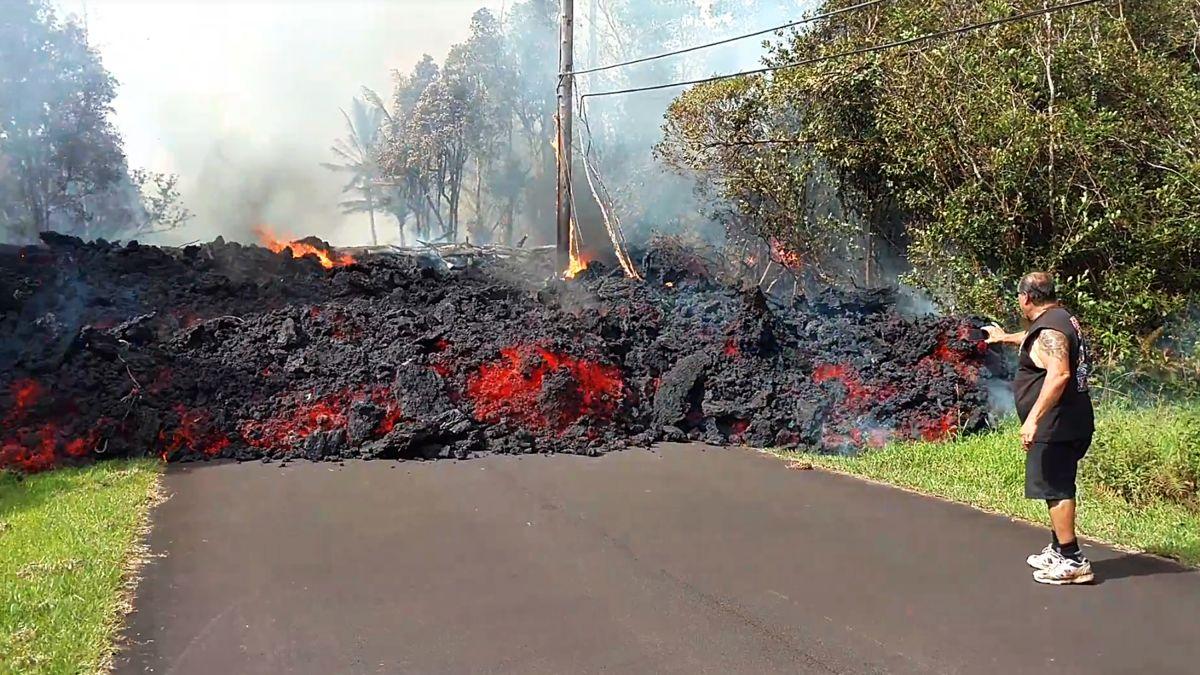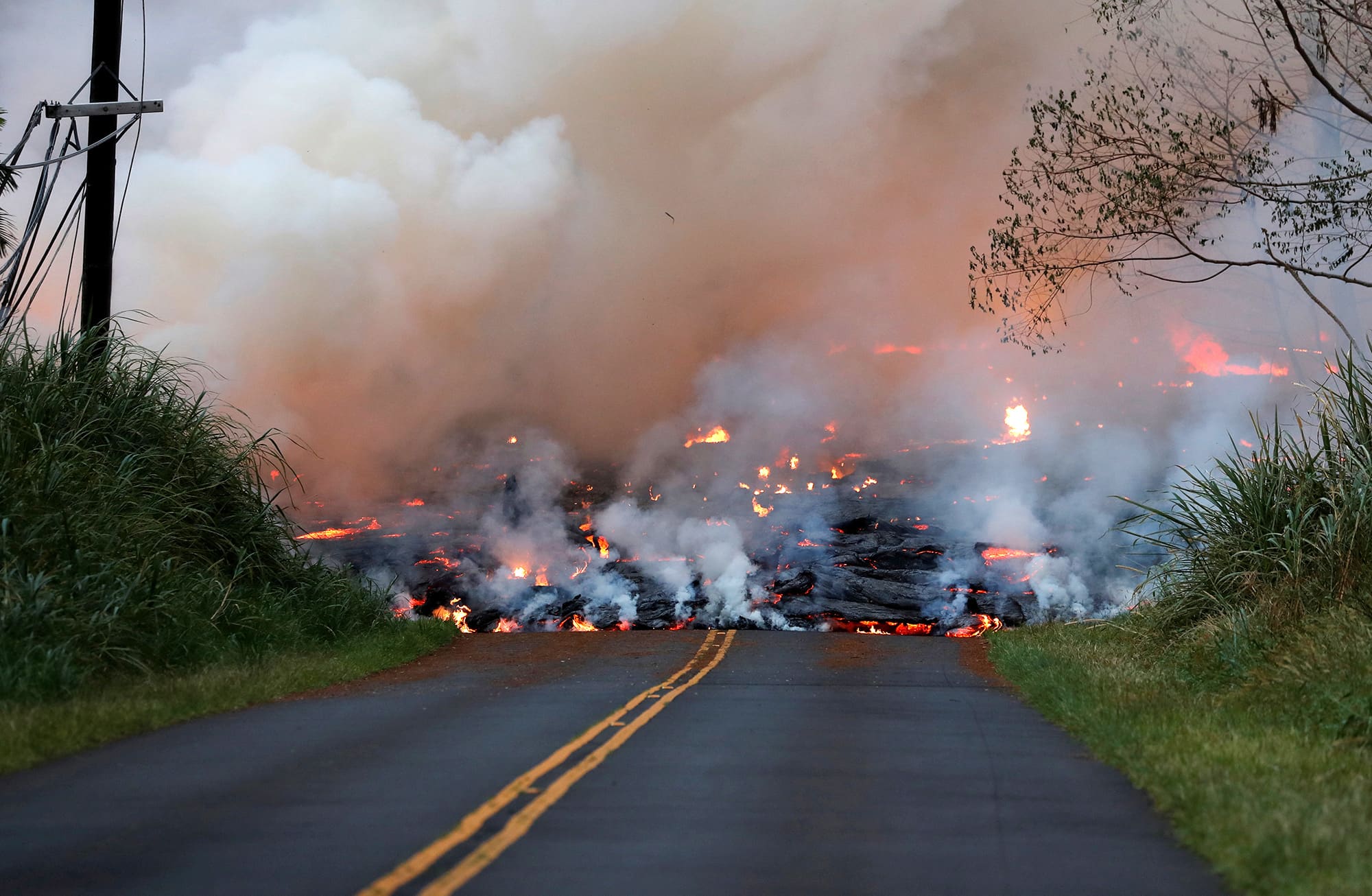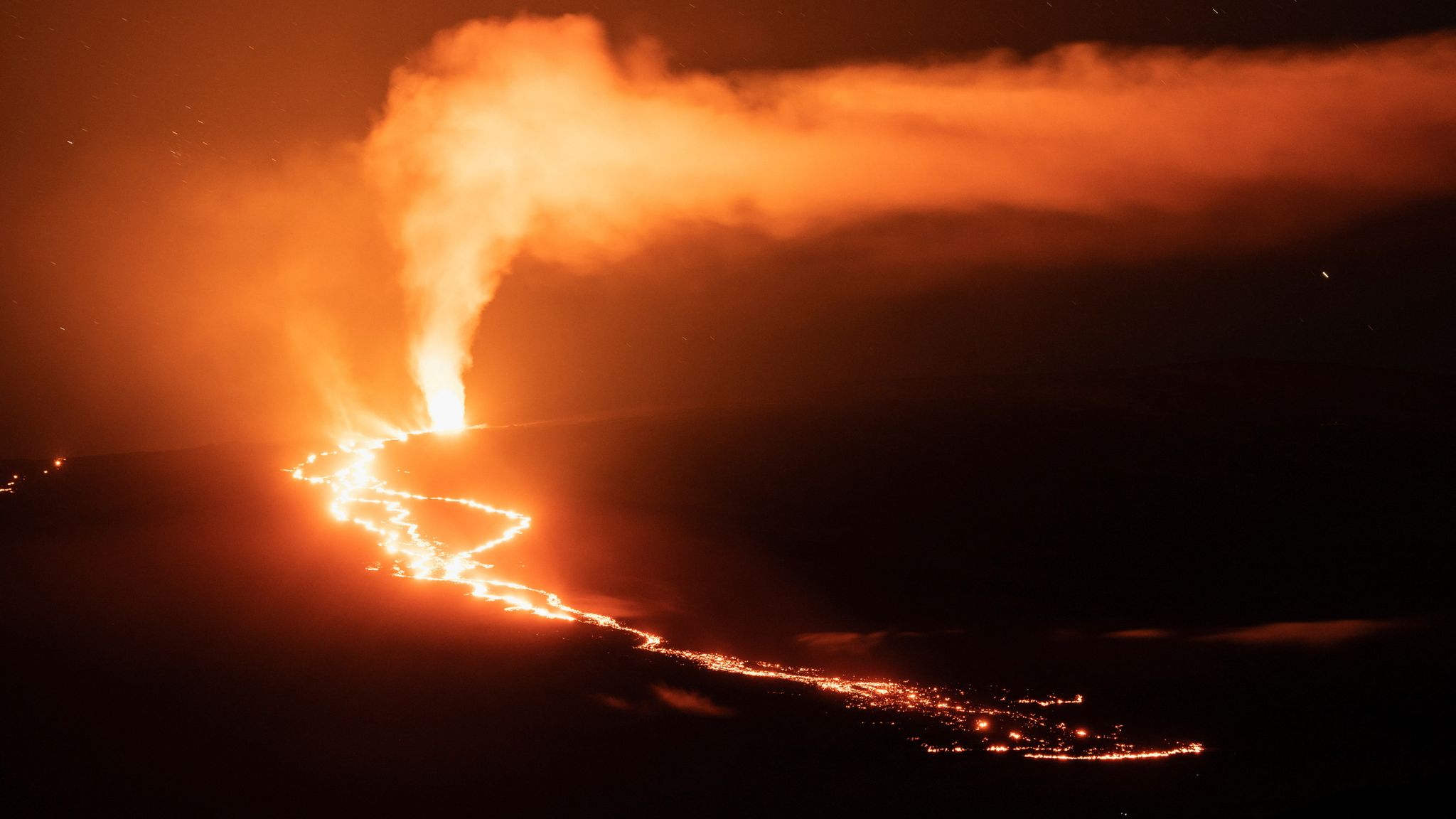HILO, Hawaii — Many residents on Hawaii’s Big Island are ready for huge disruption if lava from the Mauna Loa volcano slides across a critical roadway, blocking the quickest route connecting two sides of the island.
The molten rock could render the road inaccessible, forcing motorists to seek alternate coastal routes to the north and south. This might add hours to commuting, doctor’s appointments and goods truck deliveries.
“I am very concerned about it being cut off,” said Frank Manley, a licensed practical nurse whose journey from his home in Hilo to a Kaiser Permanente facility in Kailua-Kona is already an hour and 45 minutes each way.
If the highway closes, he expects to drive two to three hours in each direction. Manley is concerned that an accident or other traffic interruption along an alternate route would cause him to miss work.
The lava is seeping steadily and may reach the road by next week. However, its direction is uncertain and may vary, or the flow may cease completely, sparing the highway.
According to U.S. Geological Survey geologists, the slow-moving torrent was around 2.7 miles (4.3 km) from the road on Friday.
There are more affordable housing alternatives on the island’s east side, where the county capital, Hilo, is located. However, many opportunities in beach resorts, construction, and other industries are available on the west half of the island, where Kailua-Kona is located. The two communities are linked by Saddle Road, commonly known as Route 200 or the Daniel K. Inouye Highway.
Many residents on Hawaii’s Big Island are ready for huge disruption if lava from the Mauna Loa volcano slides across a critical roadway.
The state Department of Transportation moved Thursday to alleviate expected traffic congestion on the northern coastal route by reinstating a lane across Nanue Bridge that had been blocked for maintenance.
Hilo is also one of the island’s major ports, where a wide range of goods arrive by ship before being transported by vehicle.
Susan “Sue” L. K. Lee Loy, who represents Hilo and parts of Puna on the Hawaii County Council, expressed worry about huge rigs traveling through aging coastline bridges.
“Rethinking how we move around on Hawaii Island is going to take a lot,” she said.
Manley stated that he would have to get up at 3 a.m. to arrive at work by 8 a.m. He would get home at 8 p.m. if he left at 5 p.m. “That drastically reduces the amount of time I could spend with my family,” he explained.
Tanya Harrison of Hilo said she would need a full day off work to drive to Kona to see her doctor.
The population of the Big Island in Hawaii is above 200,000 people. Harrison said she couldn’t fathom the traffic as visitors, delivery vehicles, and commuters were forced to reroute.
“It might even be quicker just to fly to Honolulu,” she remarked, referring to the hour-long journey. “There is no queue at Hilo International Airport.” Flying over, seeing the doctor, and returning would be faster than driving.”
Outrigger Kona Resort & Spa intends to provide rooms at a Kailua-Kona hotel so that its dozen or so Hilo-based workers can avoid the five-day journey.
Major astronomical research at the top of Mauna Kea, a 13,803-foot (4,207-meter) hill next to Mauna Loa that houses some of the world’s most modern telescopes, might also need closure.
Many residents on Hawaii’s Big Island are ready for huge disruption if lava from the Mauna Loa volcano slides across a critical roadway.
The road to Mauna Kea’s summit is located halfway between Hilo and Kona. Many telescope workers would be compelled to take long, roundabout routes if lava crossed Saddle Road on either side of Mauna Kea Access Road.
According to Rich Matsuda, associate director for external relations at W.M. Keck Observatory, telescopes may need to change staff schedules and lodge workers at a facility partway up the mountain for a spell to avoid commuting.
There’s also a risk that the lava flow will run directly across the lower half of the Mauna Kea Access Road, preventing employees from reaching the top. Matsuda believes they can use gravel or other alternative paths if that happens.
Previously, the telescopes were shut down during multi-day or week-long winter storms. “So we’re prepared to do that if we have to,” Matsuda said.
Hayley Hina Barcia, a Hilo resident, is concerned about the difficulties of reaching west-side surf locations and family scattered around the island.
Many residents on Hawaii’s Big Island are ready for huge disruption if lava from the Mauna Loa volcano slides across a critical roadway.
“A lot of my family is on the Puna side, and we have other family in Kona,” said Barcia. “We use this road to see each other, especially with the holidays coming up, to spend time, so we’ll have to drive several hours longer if we go the south way or the north road.”
Geologists with the Hawaiian Volcano Observatory predict that if Mauna Loa follows historical patterns, the eruption, which began Sunday night, will last one to two weeks.
Since then, people have packed the route to catch sight of the lava. A two-vehicle accident brought two persons to the hospital with “not serious injuries,” according to Hawaii Police Department spokesperson Denise Laitinen.
In a letter to President Joe Biden, U.S. Rep. Ed Case and U.S. Rep. Kaiali’i Kahele stated that Hawaii County would require “immediate help” to keep island towns safe if lava flow blocked the highway. Because one of the island’s principal hospitals is on the island’s east side, the two Hawaii Democrats emphasized that restricted access could impede emergency services.
SOURCE – (AP)












